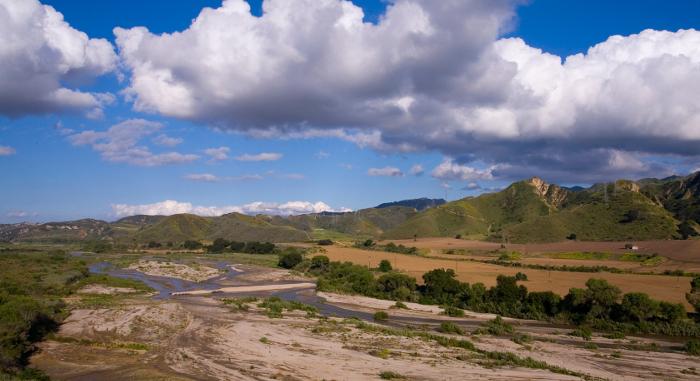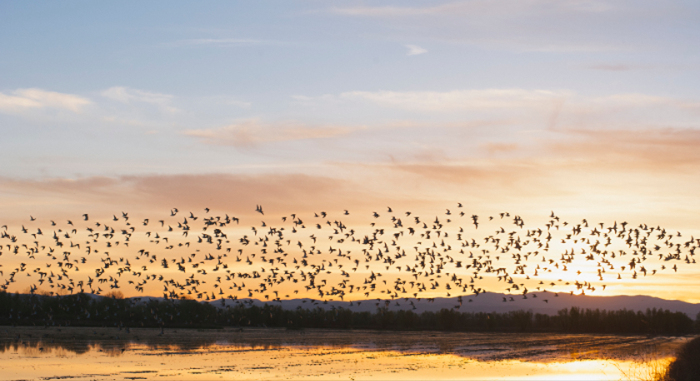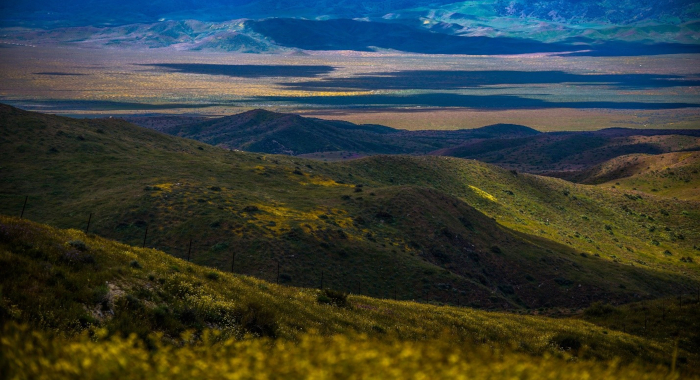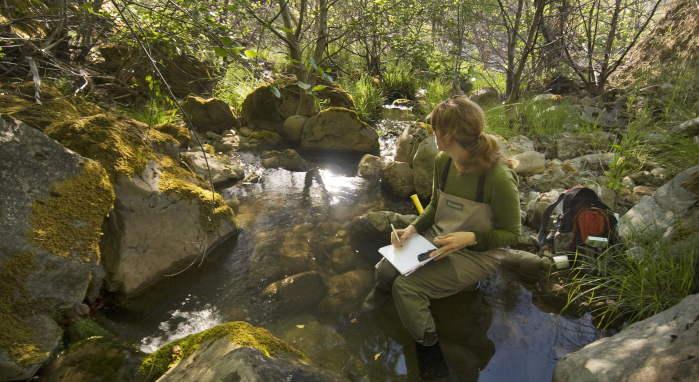California is one of the most hydrologically altered landscapes in the world. As water becomes ever more scarce and the human population continues to grow, that vast engineered system strains to meet the needs of people let alone the needs of nature.
Water rights allocations far exceed actual surface water supply, and millions of wells tap groundwater to meet the increasing demands of farms and communities. As groundwater reservoirs are depleted they can in turn reduce surface flows – exacerbating a vicious cycle in which people and nature both lose. Rivers, wetlands and groundwater-dependent ecosystems are caught in this struggle for an increasingly limited resource. Nearly half of California’s roughly 4,000 freshwater species are considered vulnerable to extinction. Of the taxa that are found nowhere but California – our endemic freshwater biodiversity – 90 percent are at risk.
But there is hope. While it is impossible to return natural flows to most of California’s rivers and streams, we can – through science, technology, and innovative market tools – endeavor to deliver water when and where nature needs it most.




Sarah M. Yarnell, Ann Willis, Alyssa Obester, Ryan A. Peek, Robert A. Lusardi, Julie Zimmerman, Theodore E. Grantham, Eric D. Stein
Very few rivers have protections to protect flow for species and ecosystems, in part because of the complexity and resources required to develop ecological flow criteria - the amount of water needed…John C. Stella, Li Kui, Gregory H. Golet, Frank Poulsen
Streamside forests are incredibly important for fish, birds and other wildlife. They are also valuable for storing carbon which is needed to combat climate change. This is especially the case in…Case study by: K.D. Holl, G.H. Golet
Advancing conservation requires understanding the constraints imposed on natural systems by human societies. This understanding typically comes from engagement with local stakeholders, as opposed…O.J. Robinson, V. Ruiz-Gutierrez, M.D. Reynolds, G.H. Golet, M. Strimas-Mackey and D. Fink
Information on species’ habitat associations and distributions, across wide spatial and temporal scales, is fundamental for guiding conservation. Yet these data are often in short supply. In…Eric D. Stein, Julie Zimmerman, Sarah M. Yarnell, Bronwen Stanford, Belize Lane, Kristine T. Taniguchi-Quan, Alyssa Obester, Theodore E. Grantham, Robert A. Lusardi, Samuel Sandoval-Solis
The first step to protecting rivers is figuring out how much water they need to protect species and ecological functions - known as ecological flow criteria. Scientists have struggled to develop flow…Kelsey Jessup, Sophie S. Parker, John M. Randall, Brian S. Cohen, Rowan Roderick-Jones, Shona Ganguly, Jill Sourial
This paper presents results from Planting Stormwater Solutions, part of TNC’s Urban Conservation work in Los Angeles. The authors develop a methodology to prioritize siting of vegetated…Kristen Wilson, Dale W. Johnson, Douglas F. Ryan, ed.
Authored by TNC staff and colleague, Chapter 8 of this report synthesizes environmental monitoring and studies performed at Sagehen Experimental Forest that are relevant to water quality regulatory…Environmental Science Associates (ESA) for The Nature Conservancy and Naval Base Ventura County
Charlotte Stanley, Alyssa Mann, Walter Heady
The United States operates thousands of military installations in the U.S. and worldwide, worth about $1.2 trillion. These facilities are where personnel train and test weaponry, with…Walter Heady, Alyssa Mann, Stacey Solie, Bob Battalio, James Jackson, Kendall Lousen, and Bob Barnes
The U.S. Congress and the Department of Defense (DoD) have determined that climate change is a threat to national security and have required military installations to develop plans to improve the…Alyssa Mann, Walter Heady, Charlotte Stanley
TNC and the United States Navy partnered together to prepare for the impacts of climate change on Naval Base Ventura County (NBVC), Point Mugu in California. NBVC is a critical and strategic asset of…Christopher Dillis, Van Butsic, Jennifer Carah, Samuel Zipper, Theodore Grantham
Water management practices for cannabis farming in California are not well understood. This study examined permit reporting data and found that the vast majority (>75%) of permitted cannabis farms…Barton H. Thompson, Jr., Melissa M. Rohde, Jeanette K. Howard, Sandi Matsumoto
In 2014, California’s landmark Sustainable Groundwater Management Act (SGMA) promised comprehensive management of California’s groundwater. This report, Mind the Gaps: The Case for Truly…Christopher Dillis, Eric Biber, Hekia Bodwitch, Van Butsic, Jennifer Carah, Phoebe Parker-Shames, Michael Polson, and Theodore Grantham
This study used permitting and GIS data to explore geographic characteristics of legal cannabis farms in California. The study found two divergent paths of development - one characterized by numerous,…Julie K.H. Zimmerman, Daren M. Carlisle, Jason T. May, Kirk R. Klausmeyer, Theodore E. Grantham, Larry R. Brown, Jeanette K. Howard, Nathaniel Rindlaub, Falk Schuetzenmeister
Water is essential for California’s people, economy, and environment. Centuries of water management through dams and diversion have altered the flows in many streams and rivers, which can harm…Kirk Klausmeyer, Jeanette Howard, Melissa Rohde, Charlotte Stanley
The first step to sustainably manage groundwater dependent ecosystems (GDEs) is to identify where they are. The Nature Conservancy developed a statewide spatial database that provides locations of…Laurel Saito, Bill Christian, Jennifer Diffley, Holly Richter, Melissa M. Rohde, Scott A. Morrison
In this paper, we describe minimum provisions for planning, managing, and monitoring groundwater in a manner that collectively can lower the risk of harm to groundwater-dependent ecosystems and…